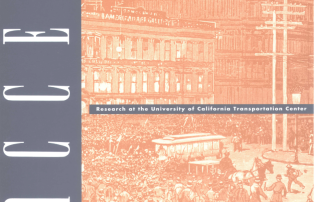ACCESS 10, Spring 1997
Director’s Comment
Martin Wachs
This is the tenth issue of ACCESS, and the University of California Transportation Center will soon reach its tenth anniversary. Such milestones call for celebration, congratulations, and contemplation of the future.







